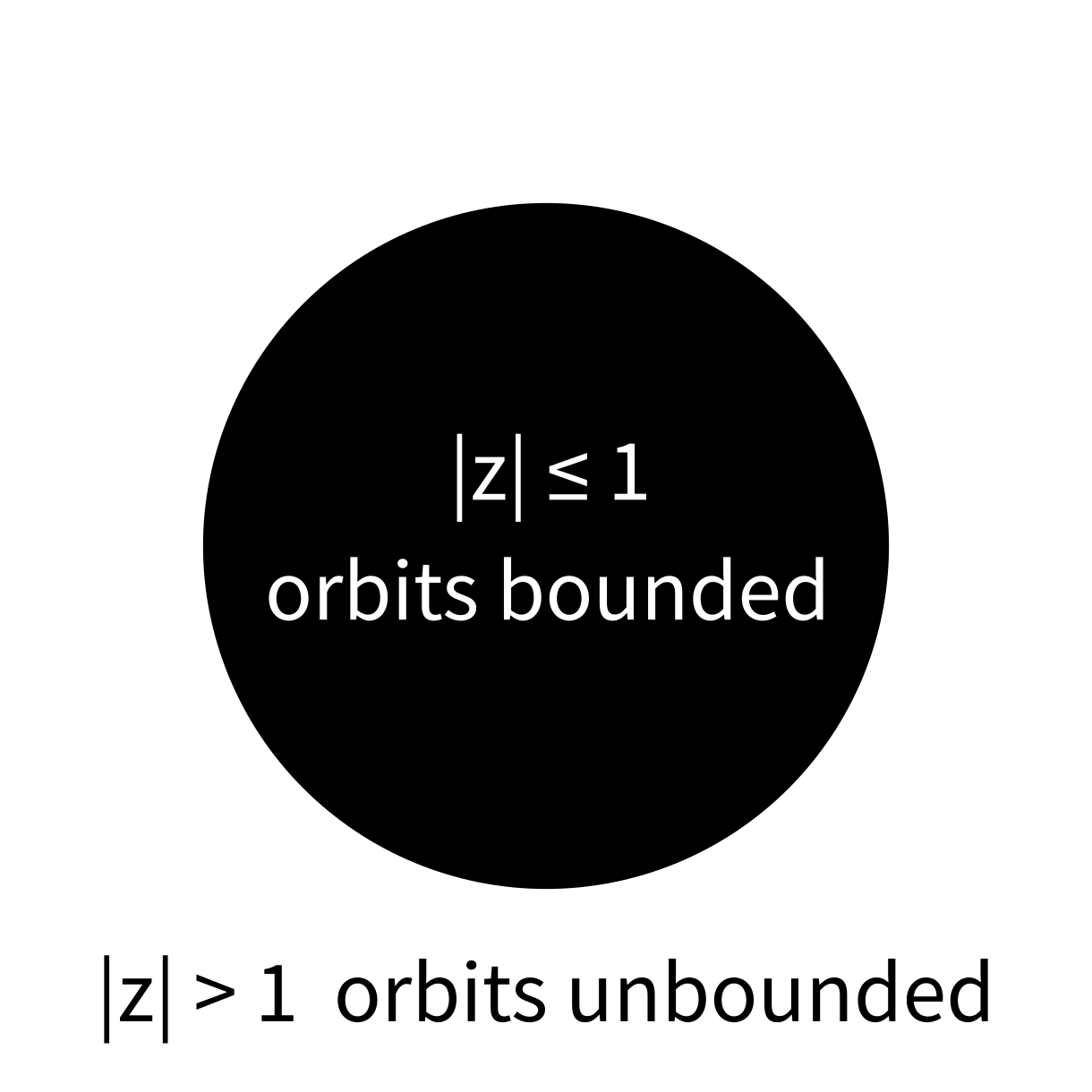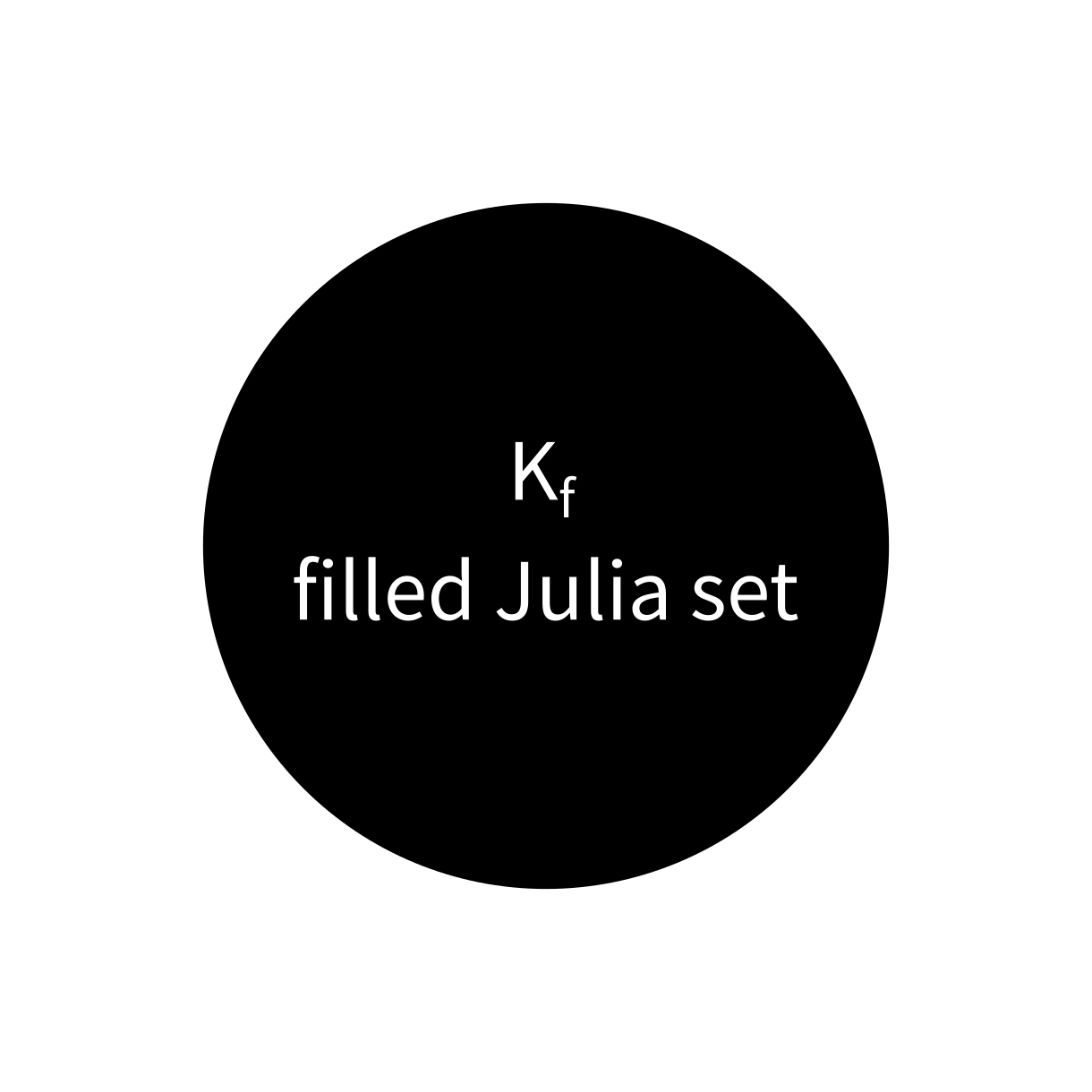Lecture 24
Julia sets
MCS 275 Spring 2023
Emily Dumas
Lecture 24: Julia sets
Reminders and announcements:
- Project 3 due 6pm Fri Mar 17
Install matplotlib
For use in upcoming lectures.
python3 -m pip install matplotlibOr see the official install instructions.
Our work on pillow and numpy has involved a lot of low-level discussion of features, rather than fully developed application examples.
Today we'll work on changing that.
Dynamics
Start with a function, e.g. $f(x) = x^2$, and a number, $a$.
Apply $f$ over and over again to get a sequence:
$a, f(a), f(f(a)), f(f(f(a))), ...$
This sequence $\{ f^{n}(a) \}_{n \geq 0}$ is the orbit of $a$ (under $f$). What can we say about it?
Let's start with a simple example, $f(x) = x^2$.
$2\to4\to16\to256 \to 65536\to\cdots$
$\frac{1}{2} \to \frac{1}{4} \to \frac{1}{16} \to \frac{1}{256} \to \frac{1}{65536} \to \cdots$
What happens for other starting points?
For real numbers, orbits under $f(x)=x^2$ are easy:
- If $|a|<1$, the orbit of $a$ converges to $0$
- If $|a|>1$, the orbit of $a$ goes to $\infty$
- If $|a|=1$ the orbit is bounded but doesn't go to $0$
For $f(z)=z^2$ with complex numbers, it's the same!
- If $|a|<1$, the orbit of $a$ converges to $0$
- If $|a|>1$, the orbit of $a$ goes to $\infty$
- If $|a|=1$ the orbit is bounded but doesn't go to $0$
$f(z)=z^2$

Filled Julia set
The filled Julia set of a polynomial $f$, denoted $K_f$, is the set of complex numbers that have bounded orbits under $f$.
(So $a \in K_f$ is a statement about the behavior of an infinite sequence—the orbit of $a$)
Named for mathematician Gaston Julia (1893-1978) who studied these sets starting in the 1920s.
$f(z)=z^2$


Next, let's look at $f(z) = z^2 - 1$.
First design
- Write a function to test orbit behavior of a point.
- Make a grid of points in $\mathbb{C}$ and test each one.
- Record the results in an image file (black=bounded, white=unbounded).
Divergence criterion
For $f(z) = z^2-1$, if $|a|\geq 2$, then $f^n(a) \to \infty$ as $n \to \infty$.
Improved design
- Make a grid of points in $\mathbb{C}$ and test each one.
- Use numpy array operations to apply $f$ to all of them at once, repeatedly.
- Optional: Keep track of ones that are already big, and don't apply $f$ to them.
- Record the results in an image file (black=bounded, white=unbounded).
References
- Python Data Science
Handbook by Jake VanderPlas
- Chapter 2 contains the introduction to numpy.
- There is also a print edition from O'Reilly.
- Roland Roeder's lecture notes Around the boundary of complex dynamics would be a good place for undergraduates to learn more about complex dynamics. (The most popular texts on this topic assume much more background in complex analysis and would be less accessible to an undergraduate audience.)
Revision history
- 2022-03-14 Last year's lecture on this topic finalized
- 2023-03-07 Updated for 2023